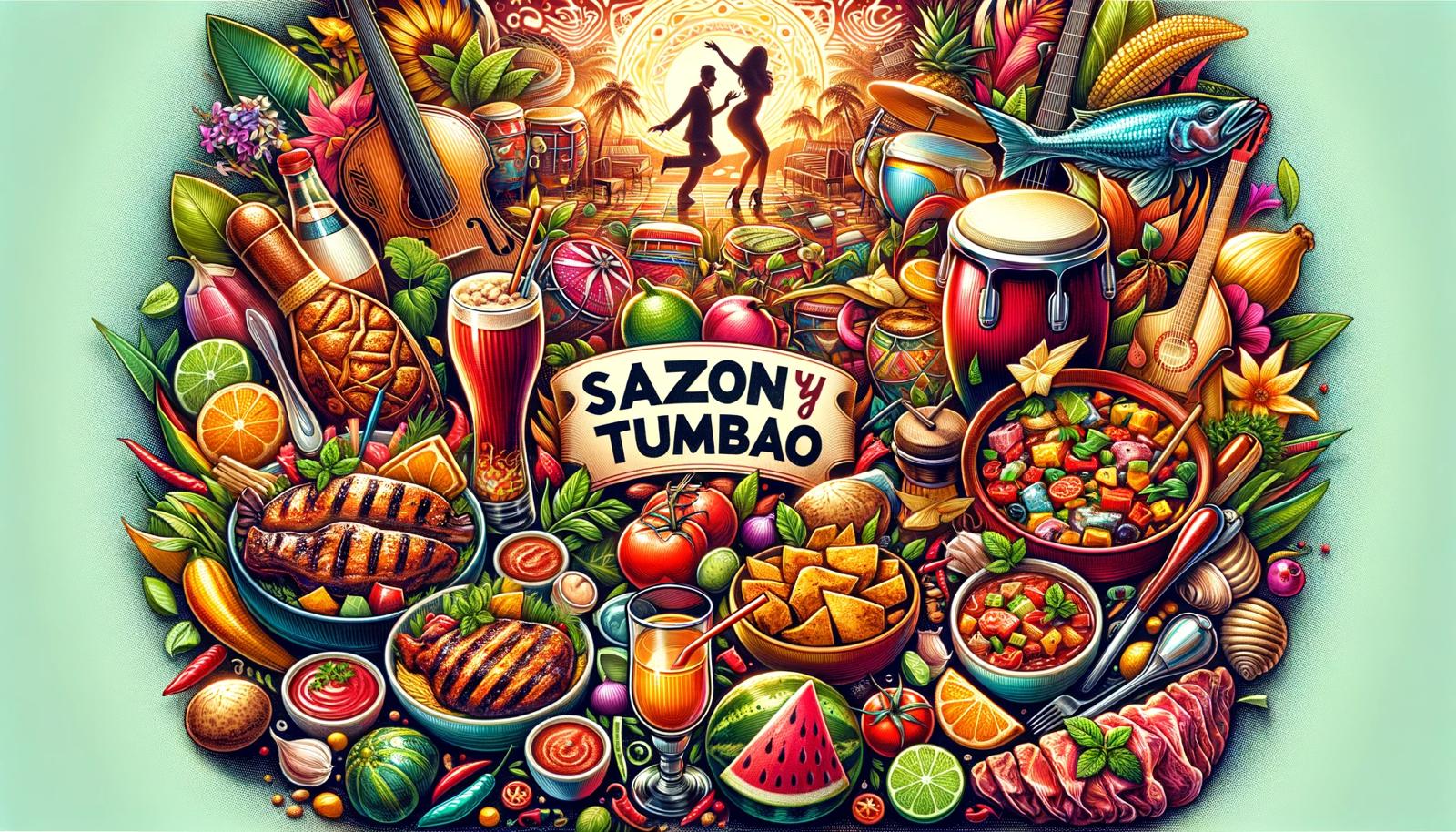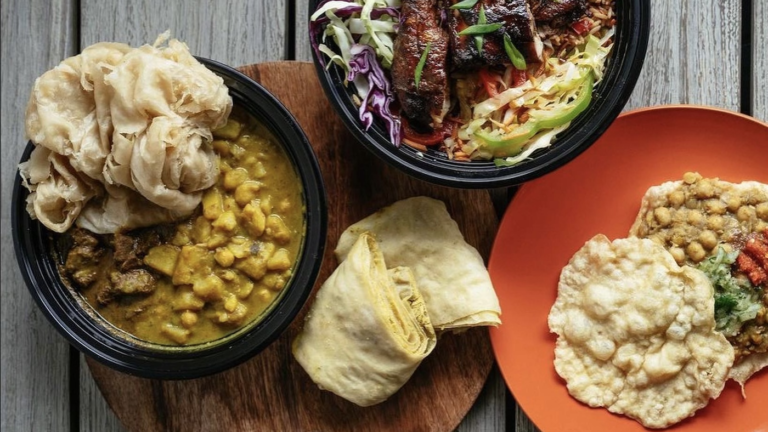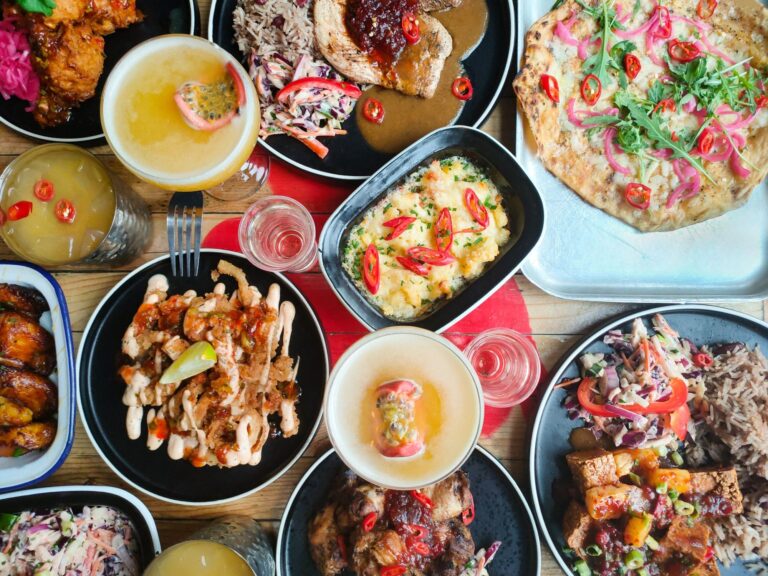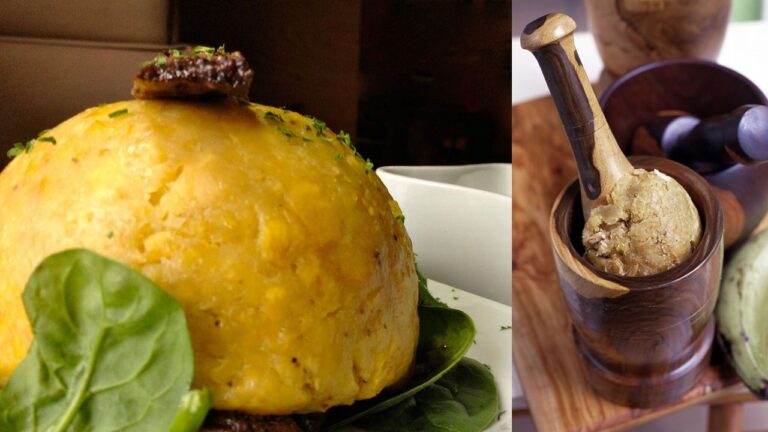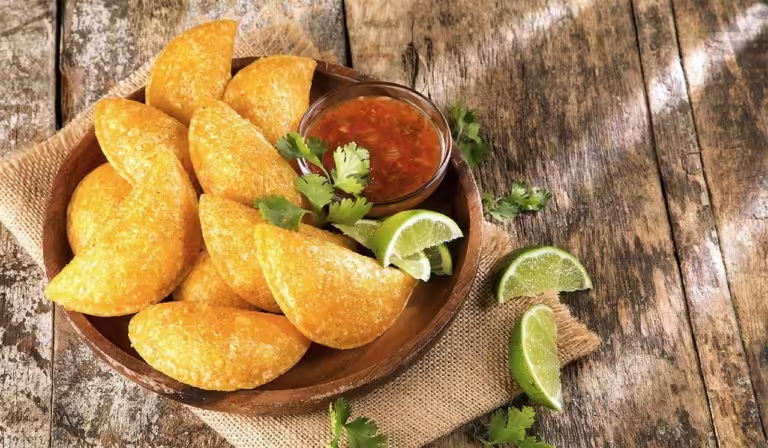Diving into the world of mofongo is like unlocking a hidden treasure chest of flavors. This isn’t just another dish; it’s a passport to Puerto Rico’s rich culinary landscape, all from the comfort of your kitchen. With its simple yet mouthwatering combo of fried plantains, garlic, and olive oil, plain mofongo might just be the hero your mealtime needs. Intrigued?
You should be. Whether you’re a seasoned chef or a curious foodie, it’s time to roll up your sleeves, grab some plantains, and let the magic happen.
Ready to give your taste buds a tropical vacation? Let’s dive in and make some mofongo together.
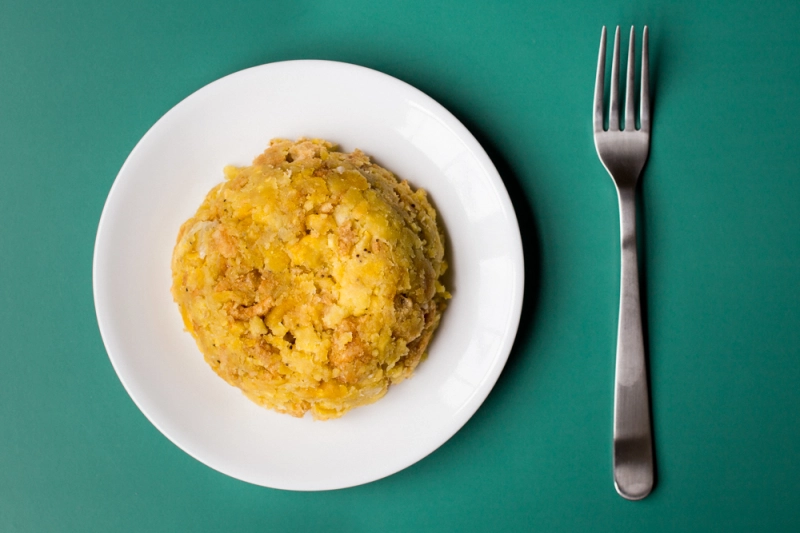
what is mofongo
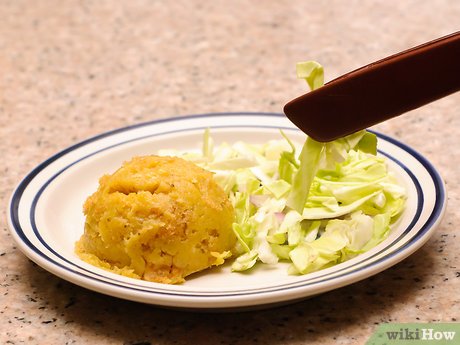
Mofongo is like the culinary equivalent of a warm hug from Puerto Rico.
It’s a beloved dish that takes green plantains, slices them up, fries them till they’re just the right kind of crispy, and then mashes them down with a hearty dose of garlic, some olive oil, and a pinch of salt for taste.
The mix often includes pork cracklings (chicharrón) for an extra layer of flavor and texture, making it a dish with a delightful crunch and savory depth.
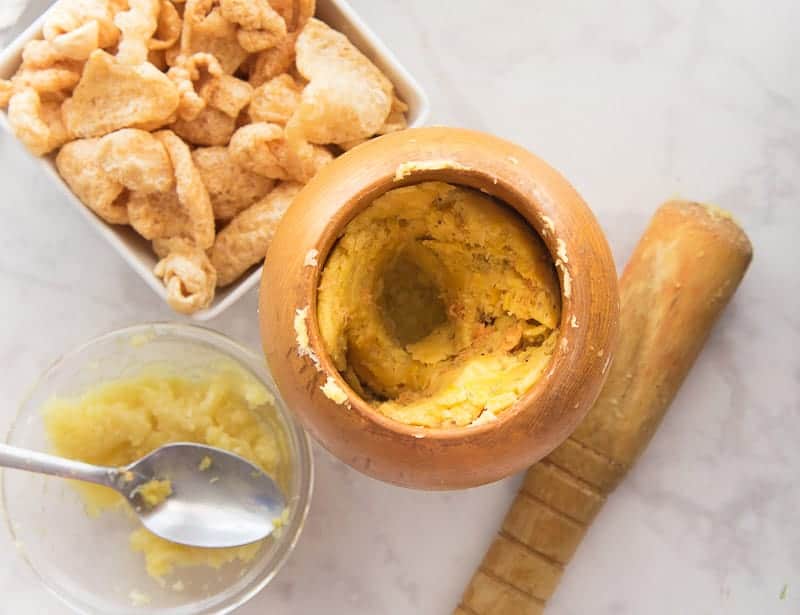
This dish isn’t just about the ingredients; it’s a celebration of Puerto Rican culture, served up in a deliciously garlicky, starchy mound that can be topped with your choice of meats or seafood, or enjoyed in its simple, unadorned glory. Whether you’re sitting down to a family meal or exploring the local cuisine, mofongo brings a piece of Puerto Rican tradition right to your plate, inviting you to dive into its rich flavors and textures. It’s comfort food at its finest, with a story in every bite.
What is traditional mofongo made of?
Traditional mofongo, that delightful staple of Puerto Rican cuisine, is like a symphony of simplicity and flavor. Here’s the traditional mofongo lineup:
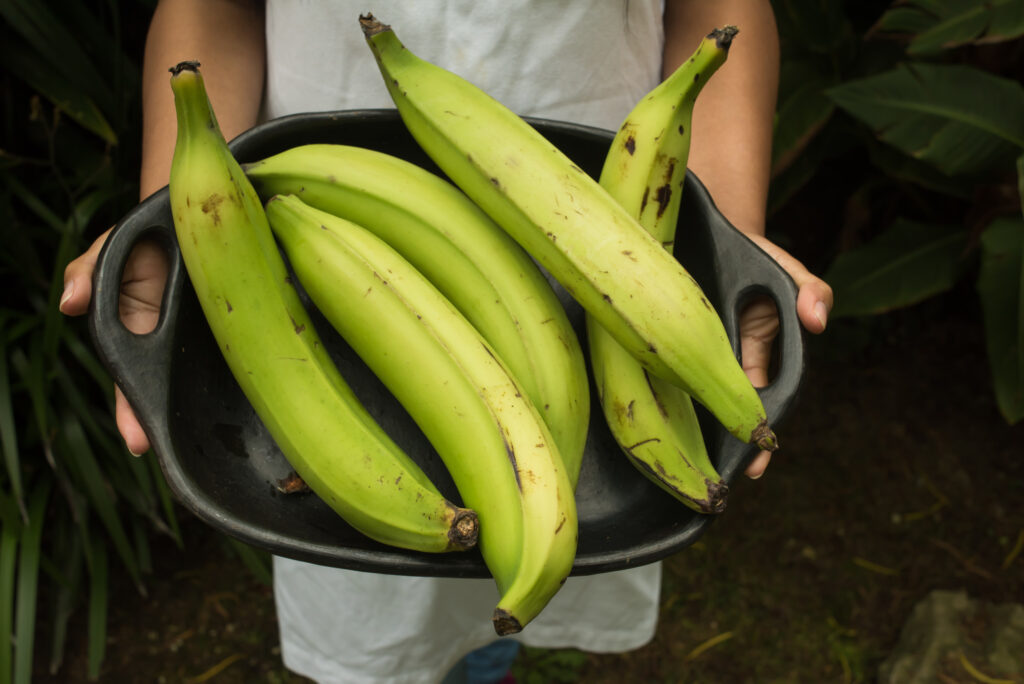
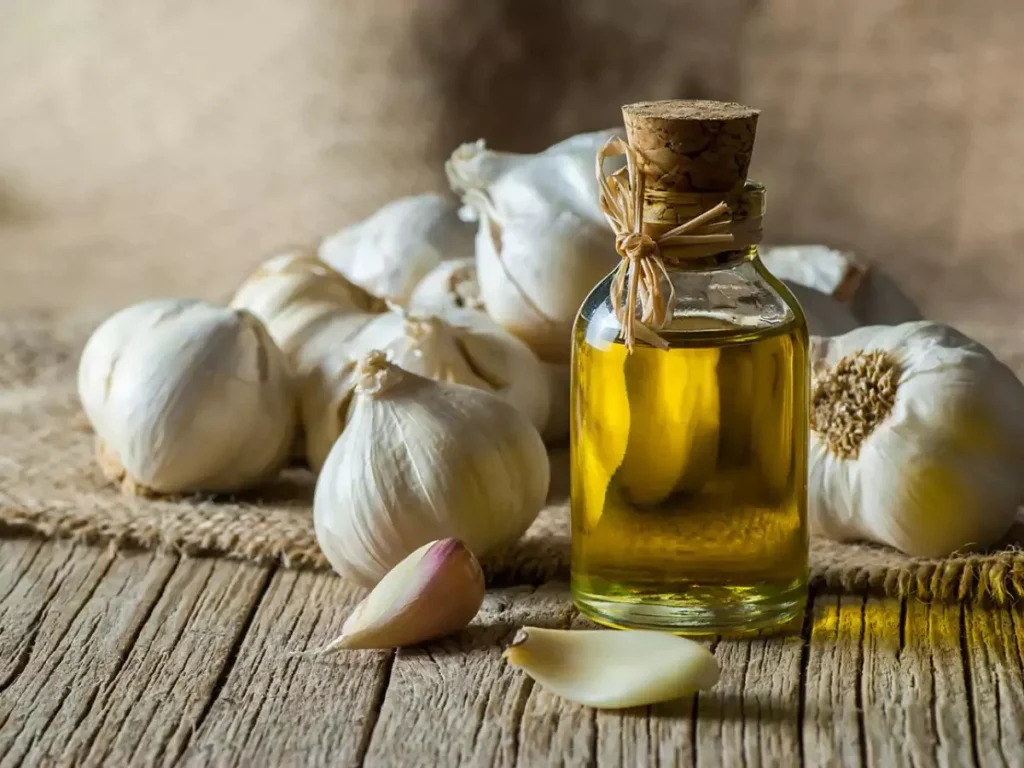
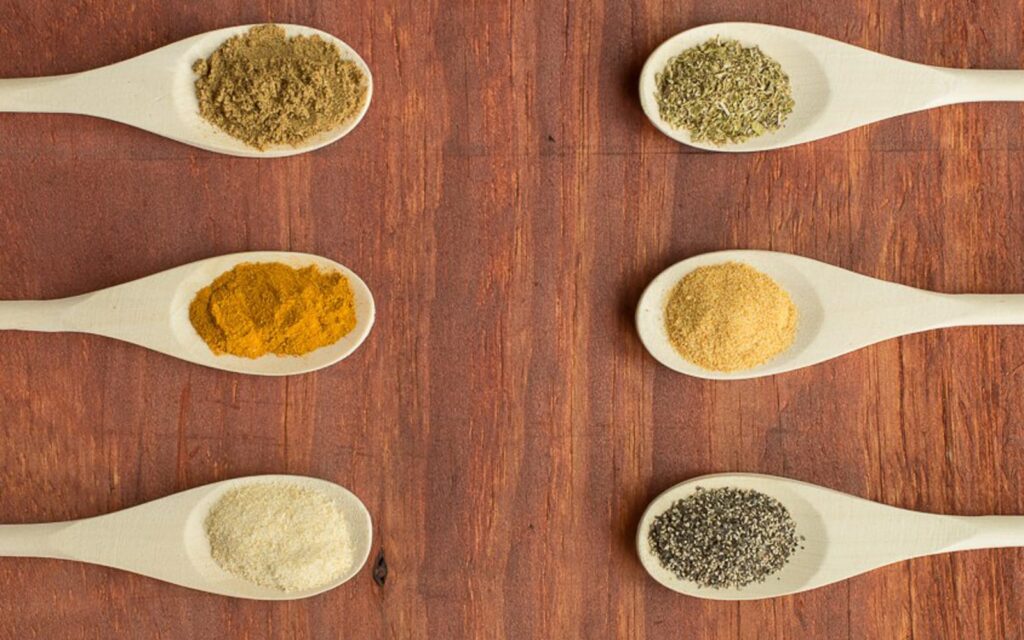
- Green Plantains: The starchy base, sliced and fried to perfection.
- Garlic: Mashed into the plantains for that irresistible flavor kick.
- Olive Oil: Brings everything together with a smooth, rich touch.
- Salt: Just a pinch to enhance all the flavors.
- Pork Cracklings (Chicharrón): For that extra savory crunch (optional but highly recommended for the authentic experience).
What meal is mofongo eaten?
Mofongo is super versatile and doesn’t like to be boxed into just one mealtime. You can spot it at breakfast, lunch, or dinner, making waves as a main dish or showing up as a trusty sidekick. In the morning, imagine pairing it with eggs and a slice of avocado for a hearty start to the day.
Come lunch or dinner, mofongo often takes center stage, topped with savory meats like shrimp, chicken, or even octopus in a flavorful sauce.
It’s that kind of dish that’s ready to mingle anytime you are, fitting perfectly into any meal where you want to add a dash of comfort and a whole lot of flavor.
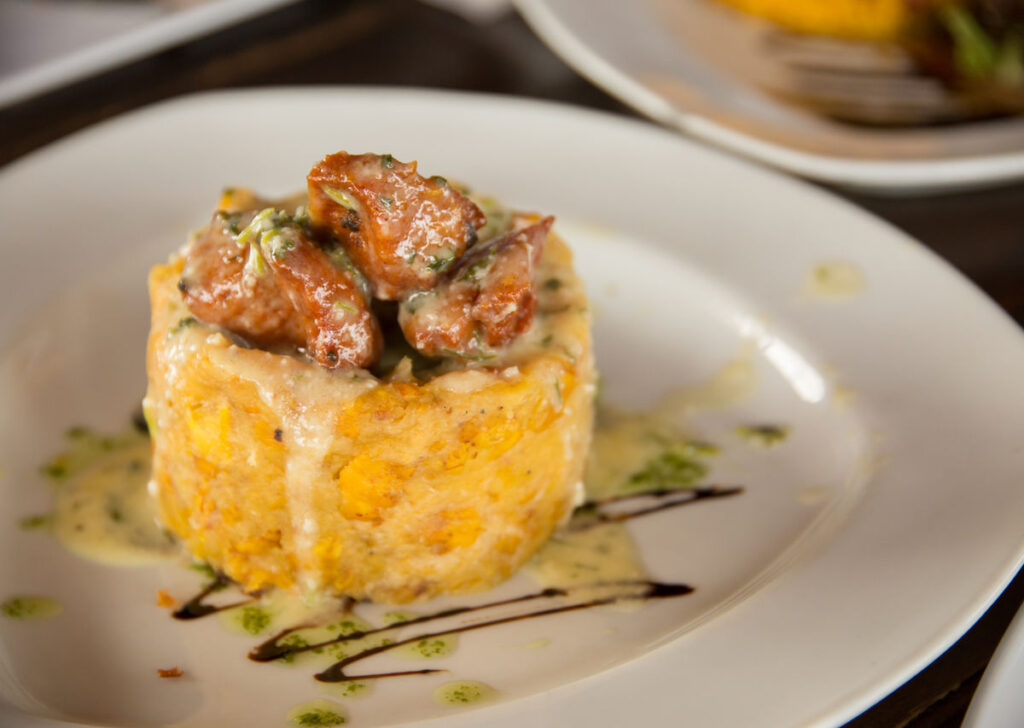
Simple and Plain Mofongo Recipe: 8 Steps

It’s straightforward, fun, and oh-so-satisfying. Here we go, step by step:
- Gather Your Ingredients: You’ll need about 3 green plantains, 4 cloves of garlic (more if you’re a garlic fanatic), olive oil, and a pinch of salt. If you’re feeling adventurous, grab some pork cracklings for that authentic touch.
- Peel the Plantains: This can be a bit of a battle, but slice the ends off, make a few lengthwise cuts in the skin, and use your fingers to pry it off.
- Slice and Fry: Cut the plantains into roughly 1-inch thick slices. Heat some oil in a pan over medium-high heat and fry these slices until they’re golden brown on all sides. You’re aiming for tender on the inside, crispy on the outside.
- Drain ‘Em: Remove the plantain slices and let them drain on a paper towel. Saying goodbye to excess oil is key.
- Mash Garlic: While the plantains are cooling off a bit, mash your garlic with a pinch of salt. This is where the flavor really starts to kick in.
- Mash Plantains: Take those slightly cooled plantain slices and start mashing them. You can use a mortar and pestle (for authenticity) or just a bowl and potato masher. Halfway through, mix in the garlic paste and keep mashing until it’s mostly smooth but still a bit chunky.
- Mix in Oil: Drizzle in some olive oil as you mash, until the mixture is moist but not overly oily. Think of the consistency of dough – it should stick together nicely.
- Serve Warm: Shape your mofongo into balls or a mound and serve it up warm. If you included pork cracklings, sprinkle them on top or mix them in during the mashing step for a surprise in every bite.
Recipe Notes:
- Plantains: Choose green plantains for that perfect texture. Ripe ones will make your mofongo too sweet.
- Garlic: Adjust the garlic to your liking. More garlic equals more flavor punch.
- Mashing: Don’t aim for a completely smooth mash. A bit of chunkiness adds to the charm.
- Oil: Olive oil is traditional, but you can experiment with others for a different taste profile.
- Serving Suggestions: Enjoy plain mofongo as a side or make it the main dish by topping it with sautéed veggies, chicken, or seafood.
- Make It Your Own: Feel free to tweak the recipe. Mofongo is forgiving and versatile.
- Storing: Mofongo is best enjoyed fresh, but you can refrigerate leftovers and reheat them in a skillet.
Nutritional Facts or Value
Creating a specific nutritional breakdown for homemade mofongo can vary based on the exact amounts and ingredients you use, but here’s a simplified list to give you an idea of what you’re looking at per serving:
- Calories: Approximately 200-300 calories, largely dependent on the size of your serving and the amount of oil used in frying.
- Carbohydrates: Around 30-40 grams, mainly from the plantains themselves.
- Fats: Approximately 10-15 grams, mostly from the olive oil and any added pork cracklings.
- Protein: Roughly 2-4 grams, a bit higher if pork cracklings are included.
- Fiber: About 2-3 grams, thanks to the plantains.
- Sodium: This can vary widely based on how much salt and pork cracklings are used, so it’s best to adjust to taste and dietary needs.
- Vitamins and Minerals: Plantains are a good source of vitamins A and C, potassium, and magnesium.
Conclusion
Diving into the world of mofongo is more than just a culinary adventure—it’s an embrace of culture, flavor, and the simple joy of cooking. With its roots deep in Puerto Rican tradition, this dish brings the humble plantain to the forefront, transforming it through frying, mashing, and mixing with garlic and olive oil into something that’s both comforting and excitingly flavorful. Whether you stick to the traditional recipe or put your own twist on it, mofongo is a testament to the beauty of simple ingredients coming together to create something truly special.
As we wrap up this journey into mofongo-making, remember that cooking is an art meant to be shared and savored. So, gather your friends or family, get those plantains ready, and enjoy the delicious connections that food like mofongo can foster. Here’s to many tasty adventures ahead, with each bite a celebration of culture and culinary delight. Cheers to your mofongo masterpiece!
